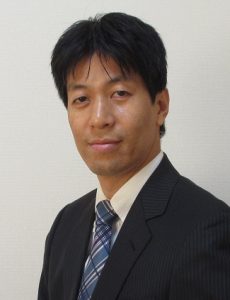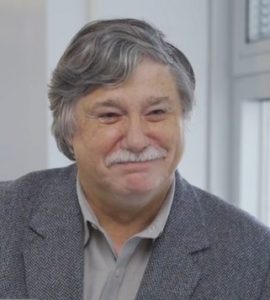Biocomputation with motile biological agents
Dan V. Nicolau, Professor, McGill University
Abstract: Many important mathematical problems, ranging from cryptography, network routing, and protein folding, require the exploration a large number of candidate solutions. Because the time required for solving these problems grows exponentially with their size, electronic computers, which operate sequentially, cannot solve them in a reasonable timeframe. Unfortunately, the parallel-computation approaches proposed so far, e.g., DNA-, and quantum-computing suffer from fundamental and practical drawbacks, which prevented their successful implementation. On the other hand, biological entities, from microorganisms to humans, process information in parallel, routinely, for essential tasks, such as foraging, searching for available space, competition, and cooperation. In the general field of using biology as computation comprises reverse engineering of biological algorithms, simulation of traffic with biological entities, e.g., slime mold, and actual computation with biological agents. The bio-network computing consists in the use of very large number of agents exploring purposefully-designed microfluidics networks. We reported the foundations of a parallel-computation system in which a given combinatorial problem is encoded into a graphical, modular network that is embedded in a nanofabricated planar device. Exploring the network in a parallel fashion using a very large number of independent, agents, e.g., molecular motor-propelled agents, bacteria, then solves the mathematical problem. This approach uses orders of magnitude less energy than conventional computers, thus addressing issues related to power consumption and heat dissipation.
Biography: Dan V. Nicolau, who is Maria Zelenka Roy Chair of Bioengineering, and the founding Chair of the Department of Bioengineering at McGill University, has a PhD in Chemical Engineering, a MS in Cybernetics, Informatics & Statistics and a MEng in Polymer Science & Engineering. He has published more than 120 papers in peer-reviewed scientific journals, a similar number of full papers in conference proceedings and 6 book chapters. Dan has co-edited one book on microarray technology and applications, and edited or co-edited the proceedings of more than 40 international conferences. He is a Fellow of the International Society of Optical Engineering (SPIE), Editor-in-Chief of IEEE Transactions on NanoBioscience, and Editor of Biosensors & Bioelectronics (Elsevier), and Scientific Reports (Nature-Springer). His present research aggregates around three themes: (i) intelligent-like behavior of microorganisms in confined spaces, which manifests in the process of survival and growth; (ii) dynamic micro/nanodevices, such as microfluidics/lab-on-a-chip, and devices based on protein molecular motors, with applications in diagnosis, drug discovery and biocomputation; and (iii) micro/nano-structured surfaces for biomedical microdevices.
Cross-domain User Activity Prediction: Todays and Future
Takahiro Hara, Professor, Osaka University

Abstract: Nowadays, varieties of services in both on-line and off-line (real) worlds support people’s daily life. To provide effective personalized services, cross-domain approaches for predicting user activities are promising, since data obtained from different service domains cover a wide range of user activities. In this talk, we will present our recent work on cross-domain user activity prediction. First, we focus on two domains, Web advertisement and E-commerce domains, and present some user purchase prediction models, which recommend products in the E-commerce domain to users in the Web advertisement domain. We also show the results of our preliminary analysis to investigate the impact of COVID-19 on user activities in both on-line and off-line worlds. Finally, we will talk about some future directions for cross-domain user activity prediction, which include challenges that bio-inspired approaches may contribute.
Biography: Takahiro Hara received the BE, ME, and Dr.E degrees in information systems engineering from Osaka University, Osaka, Japan, in 1995, 1997, and 2000, respectively. Currently, he is a full professor in the Department of Multimedia Engineering, Osaka University. His research interests include database systems, distributed systems, mobile computing, and social computing. He has published more than 500 Journal and international conference papers in the areas of databases, mobile computing, distributed systems, social computing, and wireless networking. He served as a General Chair of IEEE International Symposium on Reliable Distributed Systems (SRDS’14) and International Conference on Mobile and Ubiquitous Systems: Computing, Networking and Services (Mobiquitous’16, and 21). He served as a Program Chair of a number of international conferences including IEEE International Conferences on Mobile Data Management (MDM’06, 10 and 18), Mobiquitous’13, and IEEE SRDS’12. He served and is serving as a Program Committee Member of more than 200 international conferences including top-ranked ones such as VLDB, WWW and CIKM. He is a distinguished scientist of ACM and a senior member of IEEE.


